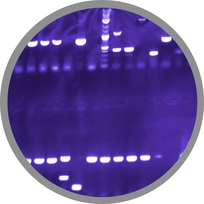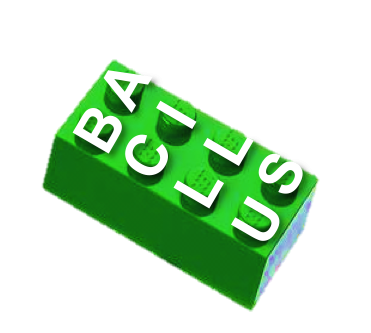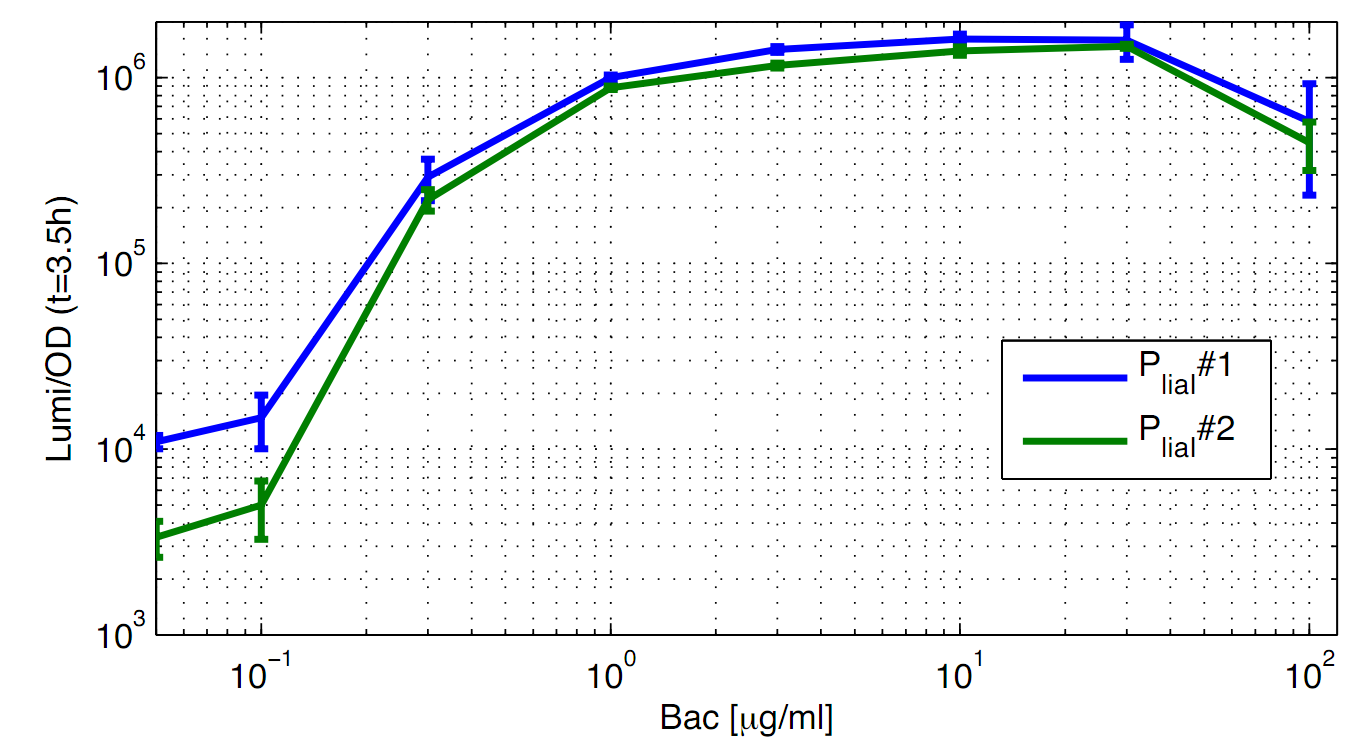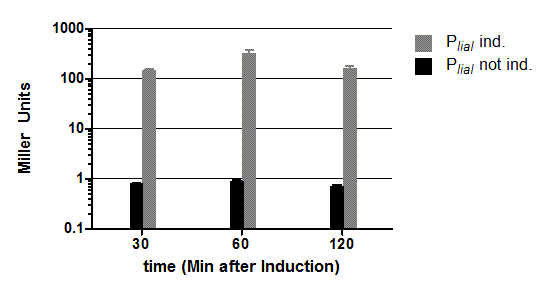Team:LMU-Munich/Data/Inducible
From 2012.igem.org
| Line 10: | Line 10: | ||
===Luminescence measurements=== | ===Luminescence measurements=== | ||
| - | [[File:plate reader induzierbar promotor. | + | {| style="color:black;" cellpadding="3" width="70%" cellspacing="0" border="0" align="center" style="text-align:left;" |
| + | | style="width: 70%;background-color: #EBFCE4;" | | ||
| + | {| | ||
| + | |[[File:plate reader induzierbar promotor.png|400px]] | ||
| + | |- | ||
| + | | style="width: 70%;background-color: #EBFCE4;" | | ||
| + | {| style="color:black;" cellpadding="0" width="100%" cellspacing="0" border="0" align="center" style="text-align:center;" | ||
| + | |style="width: 70%;background-color: #EBFCE4;" | | ||
| + | <font color="#000000"; size="2"><p align="justify">'''Fig. 1: Luminescence measurements of the inducible ''B. subtilis'' promoter P<sub>''liaI''</sub> after induction with different concentrations of bacitracin.''' OD<sub>600</sub> (up), LUMI (middle) and LUMI per OD<sub>''600''</sub> (down) of the two clones (green/blue) depending on the time (h) after induction with bacitracin (0 μg/ml(left) to 100μg/ml(right)). Data derive from three independent experiments, the graphs show the mean fo the three experiments and the standard deviation. Curves were fitted over each other (t=0, OD<sub>600</sub>=0,3) and smoothed by taking the average of three neighboring values. t=0 is the time of induction.</p></font> | ||
| + | |} | ||
| + | |} | ||
| + | |} | ||
| + | |||
<p align="justify"> | <p align="justify"> | ||
| Line 16: | Line 28: | ||
<br> | <br> | ||
<br> | <br> | ||
| - | [[File:Titration PliaI. | + | {| style="color:black;" cellpadding="3" width="70%" cellspacing="0" border="0" align="center" style="text-align:left;" |
| - | For better demonstration of the induction, data from the experiment (Fig. 1) are shown depending on the bacitracin concentration ('''Fig. 2'''). Therefore luminescence per OD<sub>600</sub> values are shown for the time point t=3,5h.</p> | + | | style="width: 70%;background-color: #EBFCE4;" | |
| + | {| | ||
| + | |[[File:Titration PliaI.png|400px]] | ||
| + | |- | ||
| + | | style="width: 70%;background-color: #EBFCE4;" | | ||
| + | {| style="color:black;" cellpadding="0" width="100%" cellspacing="0" border="0" align="center" style="text-align:center;" | ||
| + | |style="width: 70%;background-color: #EBFCE4;" | | ||
| + | <font color="#000000"; size="2"><p align="justify">'''Fig. 2: Promoter activity of P<sub>''liaI''</sub> depending on the bacitracin concentration (0,1 μg/ml to 100 μg/ml).''' Values of the experiment (Fig. 1) are shown in a different way: Luminescence per OD<sub>600</sub> of both clones (blue/green) from the time point t=3,5h. Data derive from three independent experiments.</p></font> | ||
| + | |} | ||
| + | |} | ||
| + | |} | ||
| + | |||
| + | |||
| + | <p align="justify">For better demonstration of the induction, data from the experiment (Fig. 1) are shown depending on the bacitracin concentration ('''Fig. 2'''). Therefore luminescence per OD<sub>600</sub> values are shown for the time point t=3,5h.</p> | ||
<br> | <br> | ||
<br> | <br> | ||
| Line 29: | Line 54: | ||
<br> | <br> | ||
<br> | <br> | ||
| - | [[File:Englisch Auswertung PliaI.png| | + | {| style="color:black;" cellpadding="3" width="70%" cellspacing="0" border="0" align="center" style="text-align:left;" |
| + | | style="width: 70%;background-color: #EBFCE4;" | | ||
| + | {| | ||
| + | |[[File:Englisch Auswertung PliaI.png|400px]] | ||
| + | |- | ||
| + | | style="width: 70%;background-color: #EBFCE4;" | | ||
| + | {| style="color:black;" cellpadding="0" width="100%" cellspacing="0" border="0" align="center" style="text-align:center;" | ||
| + | |style="width: 70%;background-color: #EBFCE4;" | | ||
| + | <font color="#000000"; size="2"><p align="justify">'''Fig. 3: β-galactosidase assay with (grey) and without (black) induction of bacitracin (20μg/ml) of strains carrying the promoter P<sub>''liaI''</sub> fused to ''lacZ'''''. The average of the β-galactosidase activity (Miller Units) and the standard deviation of two independent clones are shown depending on the time (minutes after induction). This graph shows representative data from one experiment which was obtained in the same way from three independent experiments.</p></font> | ||
| + | |} | ||
| + | |} | ||
| + | |} | ||
| + | |||
<p align="justify"> | <p align="justify"> | ||
The inducible promoter P<sub>''liaI''</sub> was also evaluated with the reporter vector pSB<sub>''Bs''</sub>1C-''lacZ'' which contains the ''lacZ'' reporter gene [[File:LacZ.png|50px]] ('''Fig.3'''). Promoter activity leads to the expression of the β-galactosidase which directly correlates to the promoter activity. The β-galactosidase assay of the inducible ''Bacillus'' promoter P<sub>''liaI''</sub> was repeated three times. Data show one representative result. We induced with bacitracin (20μg/ml) when OD<sub>600</sub> reached 0,4. P<sub>''liaI''</sub> does not show any activity without induction. After induction with bacitracin (20μg/ml) there is a strong gene expression so that the produced enzyme reaches an activity of about 500 Miller Units. Summing up, the activity of the enzyme and the promoter activity after induction is about 500 times higher than without induction. | The inducible promoter P<sub>''liaI''</sub> was also evaluated with the reporter vector pSB<sub>''Bs''</sub>1C-''lacZ'' which contains the ''lacZ'' reporter gene [[File:LacZ.png|50px]] ('''Fig.3'''). Promoter activity leads to the expression of the β-galactosidase which directly correlates to the promoter activity. The β-galactosidase assay of the inducible ''Bacillus'' promoter P<sub>''liaI''</sub> was repeated three times. Data show one representative result. We induced with bacitracin (20μg/ml) when OD<sub>600</sub> reached 0,4. P<sub>''liaI''</sub> does not show any activity without induction. After induction with bacitracin (20μg/ml) there is a strong gene expression so that the produced enzyme reaches an activity of about 500 Miller Units. Summing up, the activity of the enzyme and the promoter activity after induction is about 500 times higher than without induction. | ||
Revision as of 17:52, 25 September 2012

The LMU-Munich team is exuberantly happy about the great success at the World Championship Jamboree in Boston. Our project Beadzillus finished 4th and won the prize for the "Best Wiki" (with Slovenia) and "Best New Application Project".
[ more news ]

Inducible Bacillus Promoters
Luminescence measurements
The inducible promoter PliaI was evaluated in the reporter vector pSBBs3C-luxABCDE which contains the lux operon ![]() . This is why the promoter activity leads to gene expression and to the production of the protein luciferase. The luminescence of this protein can be measured with the plate reader Synergy2 (Biotek) (Fig.1). All clones show a normal growth behaviour up to a bacitracin concentration of 10 μg/ml. At higher concentrations of bacitracin the growth curves decrease because the cells die in presence of bacitracin. The promoter PliaI shows a basal activity level of about 10.000 Lumi/OD600 at the maximum. After induction with bacitracin the luminescence per OD600 increases depending of the concentration of bacitracin. The highest activity of about 1.5 Mio Lumi/OD600 can be measured after induction with 10-30 μg/ml bacitracin. If the concentration gets higher than 100 μg/ml the luminescence of both clones show a different behaviour. To see also the induction of this inducible promoter in comparison to an uninducible promoter we also did induction experiments with PliaG which should not be inducible. As expected there is no response in activity depending on the induction and PliaG shows a constant maximum of activity of about 10.000 Lumi/OD600 (Data not shown).
. This is why the promoter activity leads to gene expression and to the production of the protein luciferase. The luminescence of this protein can be measured with the plate reader Synergy2 (Biotek) (Fig.1). All clones show a normal growth behaviour up to a bacitracin concentration of 10 μg/ml. At higher concentrations of bacitracin the growth curves decrease because the cells die in presence of bacitracin. The promoter PliaI shows a basal activity level of about 10.000 Lumi/OD600 at the maximum. After induction with bacitracin the luminescence per OD600 increases depending of the concentration of bacitracin. The highest activity of about 1.5 Mio Lumi/OD600 can be measured after induction with 10-30 μg/ml bacitracin. If the concentration gets higher than 100 μg/ml the luminescence of both clones show a different behaviour. To see also the induction of this inducible promoter in comparison to an uninducible promoter we also did induction experiments with PliaG which should not be inducible. As expected there is no response in activity depending on the induction and PliaG shows a constant maximum of activity of about 10.000 Lumi/OD600 (Data not shown).
|
For better demonstration of the induction, data from the experiment (Fig. 1) are shown depending on the bacitracin concentration (Fig. 2). Therefore luminescence per OD600 values are shown for the time point t=3,5h.
β-galactosidase assay
|
The inducible promoter PliaI was also evaluated with the reporter vector pSBBs1C-lacZ which contains the lacZ reporter gene ![]() (Fig.3). Promoter activity leads to the expression of the β-galactosidase which directly correlates to the promoter activity. The β-galactosidase assay of the inducible Bacillus promoter PliaI was repeated three times. Data show one representative result. We induced with bacitracin (20μg/ml) when OD600 reached 0,4. PliaI does not show any activity without induction. After induction with bacitracin (20μg/ml) there is a strong gene expression so that the produced enzyme reaches an activity of about 500 Miller Units. Summing up, the activity of the enzyme and the promoter activity after induction is about 500 times higher than without induction.
(Fig.3). Promoter activity leads to the expression of the β-galactosidase which directly correlates to the promoter activity. The β-galactosidase assay of the inducible Bacillus promoter PliaI was repeated three times. Data show one representative result. We induced with bacitracin (20μg/ml) when OD600 reached 0,4. PliaI does not show any activity without induction. After induction with bacitracin (20μg/ml) there is a strong gene expression so that the produced enzyme reaches an activity of about 500 Miller Units. Summing up, the activity of the enzyme and the promoter activity after induction is about 500 times higher than without induction.
 "
"







